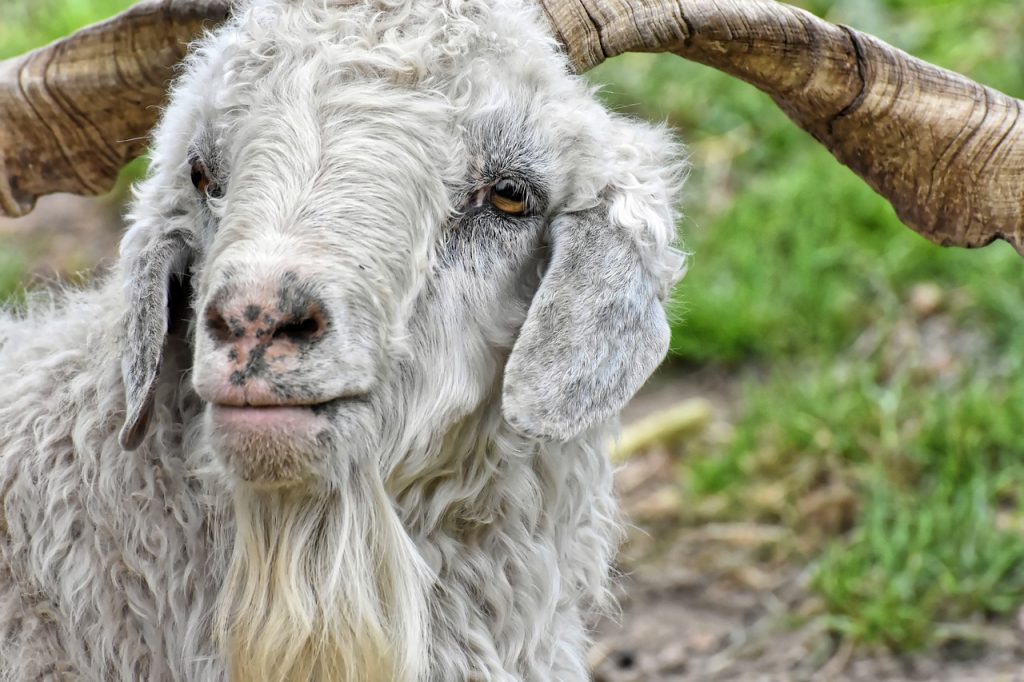What is cashmere?
Cashmere wool is spun from the fleece of cashmere goats, and was originally produced in Mongolia, Nepal and Kashmir.
The goats have very little fat, so in order to protect them during the extremely harsh winters, the region’s goats have developed undercoats. This soft, downy hairs make up the fiber we know and love today. In spring, when temperatures rise, the goats shed this warm coat, which is harvested to produce the wool yarn.
Cashmere has been in use since well before the 13th century, when Marco Polo allegedly encountered wild goats that had been domesticated by humans in caves in Mongolia. It wasn’t until the 19th century that the fabric made its way to Europe.
Recycled Cashmere
Doing research on cashmere, we came to the sad conclusion that, at this moment in time, it has become extremely dificult to source new cashmere responsibly and sustainably. So we decided, just like performance brand Patagonia before us, not to source any virgin cashmere until solutions are found. Instead, we chose to work with 100% recycled cashmere.
The wool yarn is made by collecting old cashmere garments, that are being stripped of all fournishings (zippers, buttons etc,…). Then the wool is shredded and the fibers are mechanically respun into new yarns, that can be used for knitting new pieces.
So why recycled cashmere? What happened?
Historically, cashmere has always been an assential parts of the classic luxury wardrobe, praised for its timeless quality and allure. Cashmere has been an investment, an item passed on through generations. Unfortunately, in the last decade, with the rise of fast fashion and mass consumption, this has changed.
Since 2010 the demand for cheap cashmere has risen, as mass-market retailers started selling low-priced cashmere. As demand increased, the prices for cashmere decreased dramatically, meaning the quality of cashmere lowered significantly. This race to the bottom resulted in much more goats being raised than the land can handle, making a huge impact on the goats, the people herding them and the ecosystem they live in.
The goats have sharp hooves that can break through the topsoil. On top of that, they pull out the grasses and plants roots and all, which makes the soil even more vulnerable and more difficult for the vegetation to regenerate. This overgrazing, combined with climat change and mining practices (Mongolia’s temperatures have risen fast over the last half century) is turning Mongolia’s vast pastures into deserts, putting heavy pressure on the locals and and their traditional way of living.
Our knitting lady, Ida
Coming soon
Our supplier
To source our cashmere, we selected an Italian family business, located in the Tuscany, Italy. In 1966 Giuseppe Milanesi founded “Milanesi Filati” in Prato close to Florence, a historical hub of textile expertise. Prato had a particular tradition of expertise with recycling, as people used to pick apart second hand clothes coming from America, using them to create new textiles.
Fully embracing this philosophy, Milanesi Filati was started, a company producing carded yarns with its own in-house machinery. Today the company, its name changed to “New Mill”, is run by the 4 sons of Giuseppe, with the support of about 50 employees. New Mill prides itself on their particular attention to the environment and its resources.
Maintenance
“A cashmere knit is like a book. It is something to save and go back to time after time. It is the feeling of an embrace.” –Brunello Cucinelli
Do not hang your knitwear on a coat hanger. Fold and store flat in your closet, preferably with a moth repellant nearby.
Cashmere is a fiber that does not need to be washed often. Air it out in between wears and you will last a long time before needing to wash it.
Your best bet is to wash it by hand, leaving it in cold water with a little natural washing product. Your garment can also be washed in a washing machine, please turn it inside out and wash on a gentle, short cycle. Don’t use a fabric softener, cashmere gets naturally softer over the course of time.
Cashmere can take a long time to dry, so be patient. To speed up the process, you can lay your cashmere out on a dry towel and carefully roll it up. The towel will absorb some of the moisture. Shape the garment and lay it flat in a shady spot to dry.
Important things to remember: don’t wash in warm water and use a mild detergent specifically for wool. Dry flat!
Because of it’s natural properties, your knit can start to pill on places where friction occurs. There are a number of products available to “shave” these pills off.




